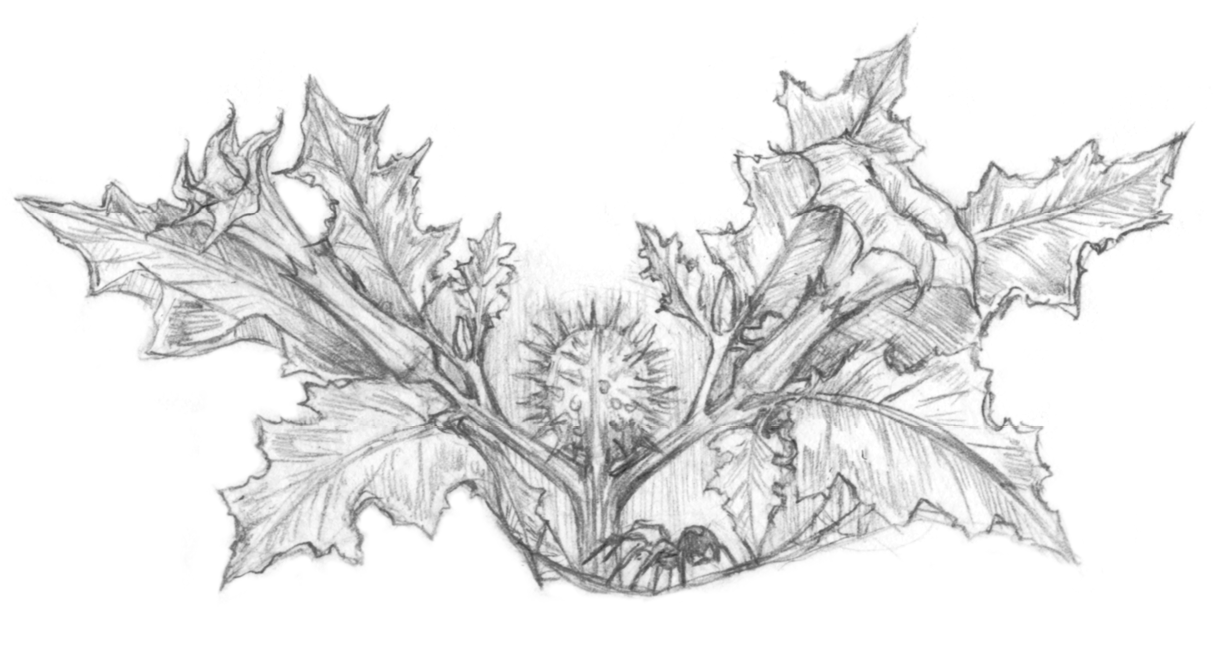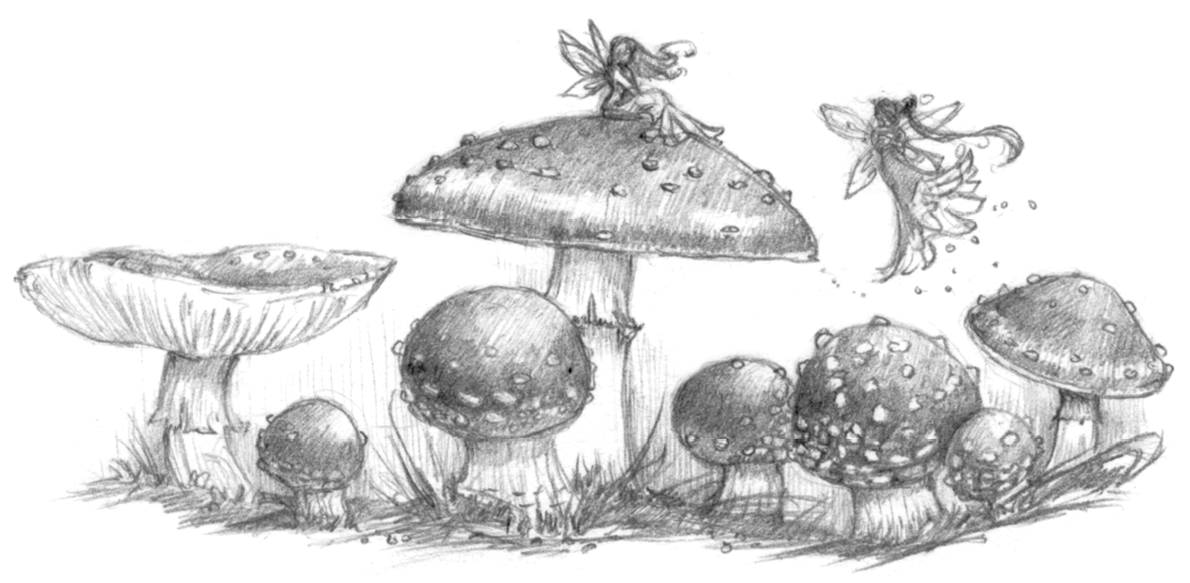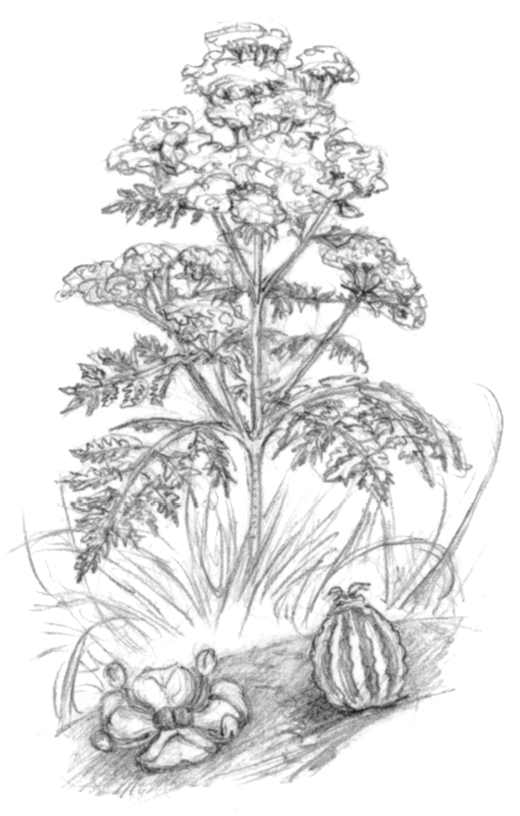Read Garden Witch's Herbal Online
Authors: Ellen Dugan
Tags: #witchcraft, #wicca, #spells, #herb, #herbal, #herbalism, #garden, #gardening, #magical herbs, #herb gardening, #plants, #Pagan garden, #nature, #natural, #natural magick, #natural magic
Garden Witch's Herbal (22 page)
Warning:
This plant is toxic and should not be ingested.
Garden Witch Tip:
There are dozens of varieties of foxgloves available to purchase at nurseries and garden centers these days. As a matter of fact, I have four different varieties of foxglove in my perennial garden right now: the classic
Digitalis purpurea
, plus a soft yellow perennial variety that is called
Digitalis grandiflora
âits common name is simply yellow foxglove. I also added a variety called âFoxy' that I am crazy about. At the moment, it is over three feet in height and is blooming in purple, white, and pink. I found another new foxglove variety this year that is called âCamelot'. I bought the lavender assortment, and I can't wait to see how it turns out.
Remember, if you want to have foxglove blossoms every year, when you first purchase your foxglove plants, buy two plantsâone that has a bloom stalk and one that does notâand plant them side by side. Foxgloves are biennials, which means that they bloom one year and are vegetative, or dormant (without flowers), the next. This way, you will have a foxglove plant in bloom each year.

datura
Datura (
Datura stramonium
)
Folk names include Jimson weed, thorn apple, devil's apple, and angels' trumpet. This annual plant may grow up to two feet in height. It has large leaves with incised edges; the leaves have a musky scent, and the large, trumpet-shaped flowers also have a peculiar odor. The flowers may be white, yellow, or purple and bloom from midsummer through autumn. The plant then produces a green, spiky seed pod.
I wrote about datura in my first book,
Garden Witchery
. I had bought the plant by accident from a plant vendor at a flea market. He referred to it as a moonflower bush. After I planted it in my gardens and it bloomed, I began to realize it was an altogether different sort of plant. Since my children were small at the time, once I identified it as a highly toxic plant, I did remove it from my magickal gardens. On an interesting note, it was years before anything else would grow in that spot.
Magickally, the plant is used to break hexes and manipulative spells, or any spell that has been cast against you. To do this, you need to sprinkle the petals of the flowers around the outside of your home. If you are considering trying this, I would recommend wearing latex gloves that you could dispose of immediately. (If you have sensitive skin, this plant may cause contact dermatitis just by brushing against the leaves or flowersâI wasn't kidding about those gloves!) Also, I would not have this plant around children or nibbling pets. The consequences could be tragic.
This baneful herb is considered to have feminine energies. Its astrological influence is Saturn, although some sources say Jupiter, and the elemental association is water.
Warning:
This plant is restricted in some countries. The datura, or thorn apple, is exceptionally poisonous; some herbal reference guides bluntly say that it causes insanity and death.

deadly nightshade
Deadly Nightshade/Belladonna
(
Atropa belladonna
)
Also known as nightshade. Folk names include bane wort, fair lady, and Witch's berry. It is also fascinating to note that this particular plant was referred to as “the mandrake of Hecate.” Both
Mandragora
, the classic mandrake, and
Atropa belladonna
come from the nightshade family (
Solanaceae
), which they share with other plants such as potatoes, tomatoes, eggplants, tobacco, and chili peppers. The nightshade is a native plant to the Mediterranean and Eurasia. It is also sacred to the triple goddess Hecate.
This herbaceous perennial has red stem sap and solitary trumpet-shaped purple flowers that blossom from mid-summer through autumn. The flowers are followed by shiny black berries. (The berries are the most virulent part of the plant.) This perennial is described as short-lived and may reach heights of up to five feet. In the past, an extract of the belladonna plant was used to dilate the eyes; this was thought to make a woman look more beautiful. This practice is not recommended today.
The botanical name for this plant,
Atropa belladonna
, may be linked to one of the three goddesses of Fate, also called the Norns. One goddess wove the strand of each person's life, another sister measured it, and the third cut the strand when the mortal's life was to be ended. Atropos is the name of the goddess that snips the thread of life. How very appropriate.
In the language of flowers, deadly nightshade whispers of fascination and Witchcraft. Magickal associations are varied; this plant was once used in charms to encourage visions (because of its hallucinogenic properties, I'm sure). It will also protect against evil and manipulative magick.
Atropa belladonna
is also thought to have the ability to make you forget your old flame. Classified as a feminine plant, its astrological influence is Saturn. The elemental association is water. Belladonna is thought to be at its most powerful at Beltane.
Warning:
Subject to legal restrictions in many countries. All parts of this plant are extremely poisonous and should be handled with extreme caution. Do not take internally.

fly agaric
Fly Agaric (
Amanita muscaria
)
Common names include agaric, Deadly Amanita, death cap, redcap mushroom, and raven's bread. Technically, this is not a botanical; it is a fungus. This storybook-looking toadstool comes into fruiting in the autumn. It can grow up to ten inches in height and is described as having a “fruit body,” with a stem ringed with remnants of a veil and a bright red cap dotted with white warts. This fungi's bright red color boldly declares its lethal nature. The cap is large (four to six inches) and spreads out quite horizontally. This mushroom's habitat is birch, pine, spruce, and cedar forests in Europe and North America. It grows in poor soils in marshes and along roadsides.The quintessential toadstool, it is one of the most recognizable of the gothic plants today.
Though it is considered highly poisonous,
Amanita muscaria
is believed to be the world's oldest hallucinogen. It was used by Siberian and Lapland shamans in vision quests and in healing rituals, which gave them a sense of flying. This mushroom is reported to be a popular food for reindeer. Interestingly, the shamans in Lapland ate it for enlightenmentâwhich may explain where the legends of the flying reindeer and Santa all dressed in red and white came from! In Europe, these mushrooms were thought to be symbols of good luck at the winter holidays and New Year's Day. This red and white mushroom also became a popular motif in early twentieth-century European postcard art.
Magickally, the fly agaric is associated with the Norse god Odin, who was a shamanic god of knowledge. According to old folklore, these fungi bring good fortune and luck to you, and they also open a doorway to the world of the fae, elves, and other earth elementals. The astrological association is Mercury. The elemental correspondence is air.
Warning:
While researching this fungi, I discovered a lot of conflicting information about its legality. In some countries, it is considered illegal to grow, sell, or to possess the fly agaric mushroom. Other places warn that it is a “Class A drug”âmeaning possession could get you a fine and up to seven years in jail. Finally, this toadstool, while gorgeous, is considered intensely poisonous. Should you stumble across some growing wild in the woods, leave them be. Just as in the Wildflowers and Witchery chapter, I suggest that you leave these toadstools alone and work your spontaneous magick for good luck right there while leaving the plant untouched.

hemlock
Hemlock (
Conium maculatum
)
Folk names include warlock's weed, winter fern, water hemlock, poison hemlock, spotted hemlock, spotted cowbane, and water parsley. This is a biennial plant native to Europe, but it now also grows widely throughout America. It flourishes in waste areas and damp habitats.
According to herbal history, death by hemlock poisoning was the official method of execution in ancient Athens. Hemlock contains the extremely toxic alkaloid coniine in all of its parts, but most particularly in the seeds. Socrates was a famous victim of this toxic plant.
The plant is often mistaken for fennel (
Foeniculum vulgare
). However, the fennel plant has foliage that is described as airy and feathery. I think fennel foliage looks like the delicate asparagus fern, and to help you with further identification, the fennel flowers are aromatic and yellow.
Another hemlock look-alike is the wild carrot, also known as Queen Anne's lace (
Daucus carota
). The flowers of Queen Anne's lace typically have a central floret that is purple. Another noted feature of this wildflower are the hairy stems, and you'll also notice that as the flowers of Queen Anne's lace wither, they contract into bowl-like shapes into which the seeds fall.
Hemlock is also distinguished from similar-looking plants by its foul smell and the markings on its stem. Hemlock's stems are smooth and green and have purple spots, or red and purple streaks, on their lower half. A way to determine whether a plant is poison hemlock is to crush some leaves and smell the result. The fennel smells like anise or licorice, while the smell of poison hemlock is often described as rank, “mouselike,” or musty.
Hemlock has fernlike leaves and may grow up to six feet in height. The plant blooms from May through September. It bears white, compound umbel-type flowers that look remarkably similar to Queen Anne's lace. (Hence the careful description of the flowers and the markings on the hemlock stems.) Remember, there will be no central purple floret on hemlock flowers.
Magickal uses are purification, and it was believed to squash your libido. This is another herb that is sacred to the goddess Hecate. Hemlock has feminine energies. Its astrological association is Saturn, and its elemental association is water.
Warning:
A baneful herb, hemlock causes death by respiratory paralysis. Do not ingest. It also causes skin irritation on contact.
